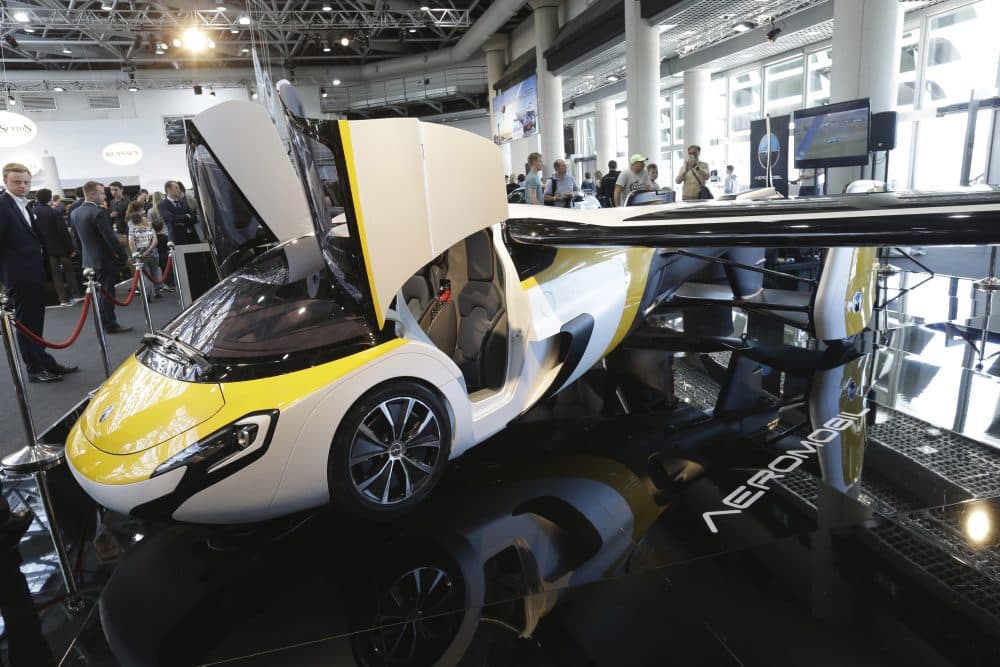Advertisement
COMMENTARY
A Flying Car In Every Garage?

I fly a plane. Not an airliner, but a small single-engine Piper Comanche. At the time it was built in the early '60s, it represented the culmination of company founder William T. Piper’s vision for bringing flying to the masses, a vision that borrowed heavily from Henry Ford’s ideas of simplicity, affordability and mass production. Piper wanted people to feel free to go to grandma’s house for dinner, even if grandma lived three states away.
Aware that planes were seen as complex, noisy and dangerous, Piper set out to make planes as comfortable and simple to operate as one’s car. He hired an industrial stylist from Detroit to give his planes the kind of refinements expected from an automobile-driving public. New airplane models had interiors of Naugahyde upholstery in matching colors with custom trim and chrome molding around the instrument panel and, most noticeably, a muffler. Piper’s Comanche had the look and feel of a sedan. As if to reinforce the plane’s affinity to the automobile, Piper installed an airspeed indicator marked in miles per hour rather than the standard aeronautical knots.
In the past week, there have been no fewer than seven announcements of proposed "dual-use vehicles" that can convert from car to airplane, or drone-like autonomous vehicles capable of whisking people from Point A to Point B automatically.
As an aircraft, Piper built a wonderful product, but the dream of “an airplane in every garage” came and went. Flying a plane is not like driving a car. Advances in technology (GPS navigation, improved autopilots and rescue parachutes) have made it easier and safer, but it is and always will be inherently more complicated and dangerous than driving a car.
So I have to wonder why the vastly more complicated and ambitious concept of marrying car to airplane endures as a realistic objective. In the past week, there have been no fewer than seven announcements of proposed “dual-use” vehicles that can convert from car to airplane, or drone-like autonomous vehicles capable of whisking people from Point A to Point B automatically. The majority of these are from upstart tech companies looking to capitalize on advances in engine technology and GPS navigation, but it includes tech giants Uber and Google.
Almost unmentioned was Terrafugia, the Woburn-based company founded by a group of MIT whiz kids, whose Transition “roadable” aircraft is actually the furthest along toward gaining government certification. Unfortunately for the Transition, it may be obsolete the moment it is certified. Why? For one thing, the compromises made in designing a vehicle that is both a car and a plane means you have both a lousy car and a lousy airplane. Secondly, the Transition requires the operator to be a licensed pilot. No wonder the company’s website is already touting its next product, the TF-X, an all-electric, vertical take-off and landing (no airport needed) and fully autonomous personal vehicle — a machine for which much of the technology has yet to be developed.
Unanswered among all these pie-in-the-sky concepts are questions such as: How are these things going to be regulated (imagine living next to the sound of a thousand leaf blowers at once)? How is the airspace going to be structured so these things can integrate with conventional aircraft, delivery drones and each other? How are they going to operate in high winds, blinding snow or an ice storm? How can manufacturers promise 100 percent mechanical reliability (unlike a car, there’s no pulling over to the side of the road when your aircraft breaks down)? So you have to ask yourself: Am I willing to be one of the first to jump into one of these things?
It seems to me we have the existing earthbound technology to get people around safely, quickly and efficiently. We’re just having trouble finding the money and political wherewithal to keep the roads up, fix the bridges, and to maintain and expand public transportation. When you’re stuck on the Southeast Expressway, it’s easy to dream about flying cars.

